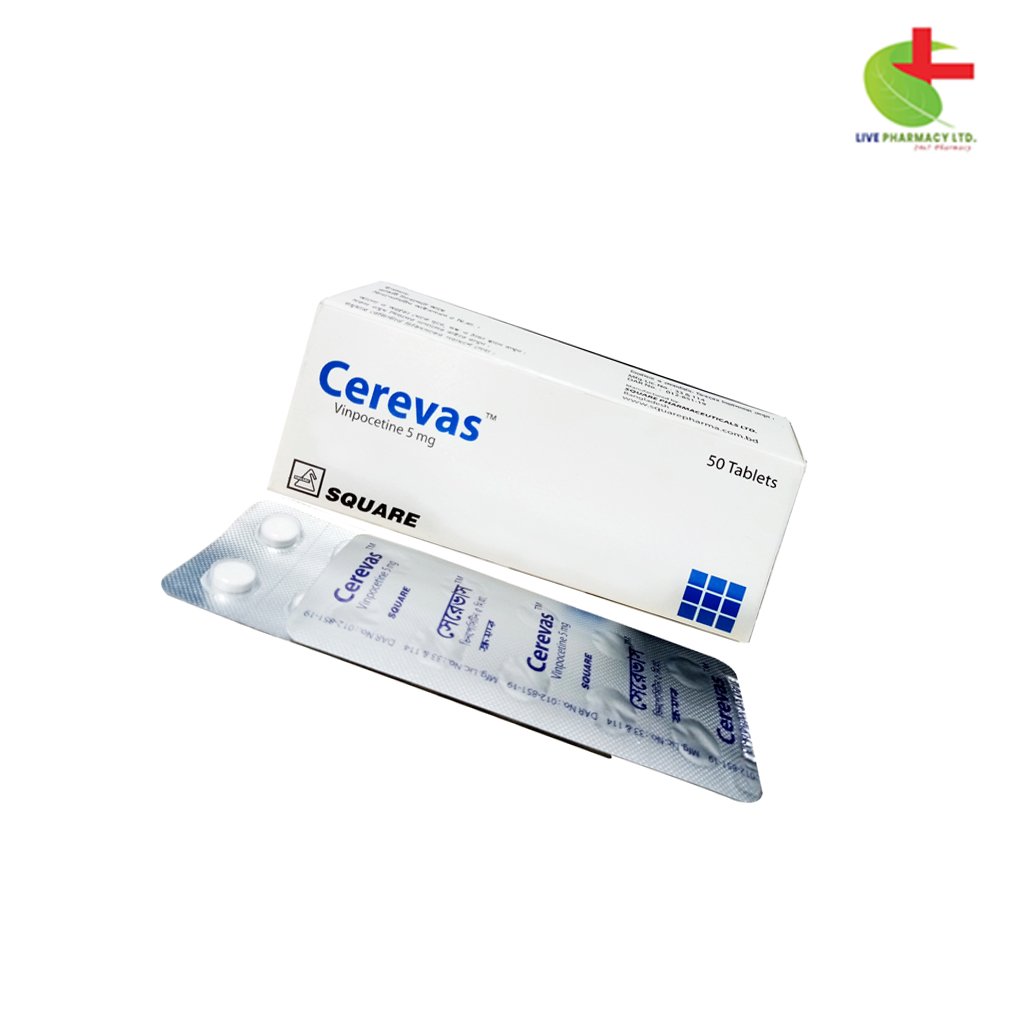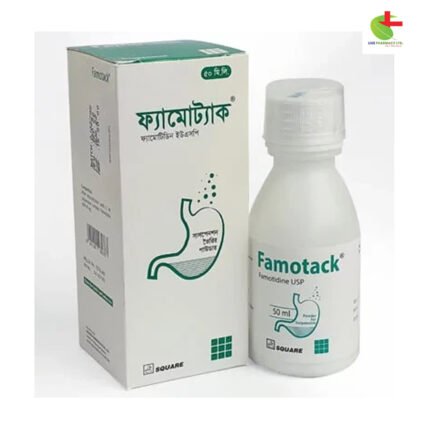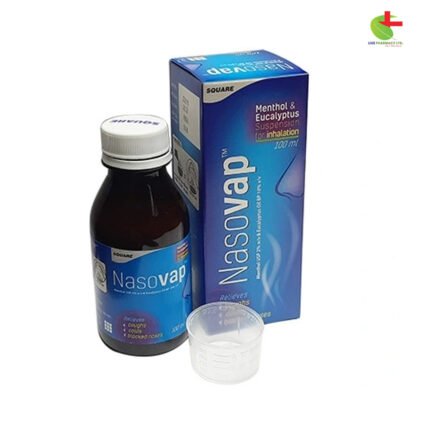Cerevas 5
40.30৳ Strip
- Specializes in Vinpocetine-based medications for enhancing cerebral metabolism and improving microcirculation.
- Tailored formulations for acute cerebro-vascular accidents (strokes) and senile disorders affecting cognitive function.
- Addresses visual disorders and specific types of hearing impairments.
- Offers tablets, injections, and infusions for comprehensive treatment options in neurological and sensory health.
 Brand
Brand
|
Square Pharmaceuticals PLC |
|---|---|
 Generics
Generics
|
Vinpocetine |
 Type
Type
|
Tablet |
Indications
Acute Cerebro-Vascular Accidents (Strokes): Used for treating ischemic strokes caused by cerebral thrombosis, cerebral embolism, acute circulatory disorders, hypertensive crises, and related conditions such as ischemic neurological deficit, complete stroke (CS), multi-infarct dementia, cerebral arteriosclerosis, hypertensive encephalopathy, and post-apoplectic conditions involving hemorrhagic strokes.
Senile Disorder: Provides relief for psychosomatic symptoms in elderly patients with cerebral insufficiency, including forgetfulness, memory disturbances, slow thinking, lack of concentration, dizziness, mood instability, aphasia, sleep disturbances, and vasomotor symptoms associated with menopausal syndrome.
Visual Disorder: Addresses vascular disorders affecting the choroid and retina due to arteriosclerosis, as well as conditions like vasospasm, macular degenerations, arterial or venous thrombosis or embolism, and glaucoma secondary to these disorders.
Hearing Disorder: Used in the treatment of impaired hearing of vascular or toxic origin (iatrogenic), including presbycusis, Meniere’s disease, cochleovestibular neuritis, tinnitus, and labyrinth-origin dizziness.
Pharmacology
Vinpocetine enhances cerebral metabolism by increasing glucose and oxygen consumption. It improves tolerance to cerebral hypoxia, shifts glucose metabolism towards the more energetically favorable aerobic pathway, and elevates ATP concentration and the ATP/AMP ratio in the brain. Additionally, it increases cerebral levels of norepinephrine, dopamine, and serotonin.
The medication significantly improves cerebral microcirculation by inhibiting platelet aggregation, reducing pathological blood viscosity, and enhancing erythrocyte deformability. It promotes oxygen transport to tissues by decreasing the oxygen affinity of erythrocytes.
Vinpocetine selectively increases cerebral blood flow without affecting systemic circulation parameters such as blood pressure, heart rate, cardiac output, or total peripheral resistance. It improves blood supply to ischemic areas without causing the steal phenomenon.
Dosage & Administration
Tablet: Take 1-2 tablets three times daily; maintenance dose is 1 tablet three times daily.
IM Injection: Administer a daily dose of 20-40 mg until symptoms improve (not exceeding 10 days), then switch to oral treatment. If ineffective, consider infusion therapy.
IV Infusion: Initiate with a daily dose of 20 mg via slow drip infusion (2 ampoules in 500-1000 ml infusion solution). Adjust dosage to 1 mg/kg body weight over 3 to 4 days. Treatment duration is 10-14 days based on patient tolerance, with gradual dose reduction before discontinuation.
Interaction
Avoid mixing with heparin due to chemical incompatibility.
Contraindications
Parenteral treatment is contraindicated in severe ischemic heart disease, severe rhythm disorders, and pregnancy.
Side Effects
Possible transient hypotension and tachycardia.
Pregnancy & Lactation
Contraindicated during pregnancy and lactation.
Precautions & Warnings
In acute cases, start with parenteral treatment until symptoms improve, then switch to oral therapy for chronic conditions.
Therapeutic Class
Cerebral vasodilator and neurosensory oxygenator drugs.
Storage Conditions
Store in a cool, dry place, protected from light and moisture.













Reviews
There are no reviews yet.